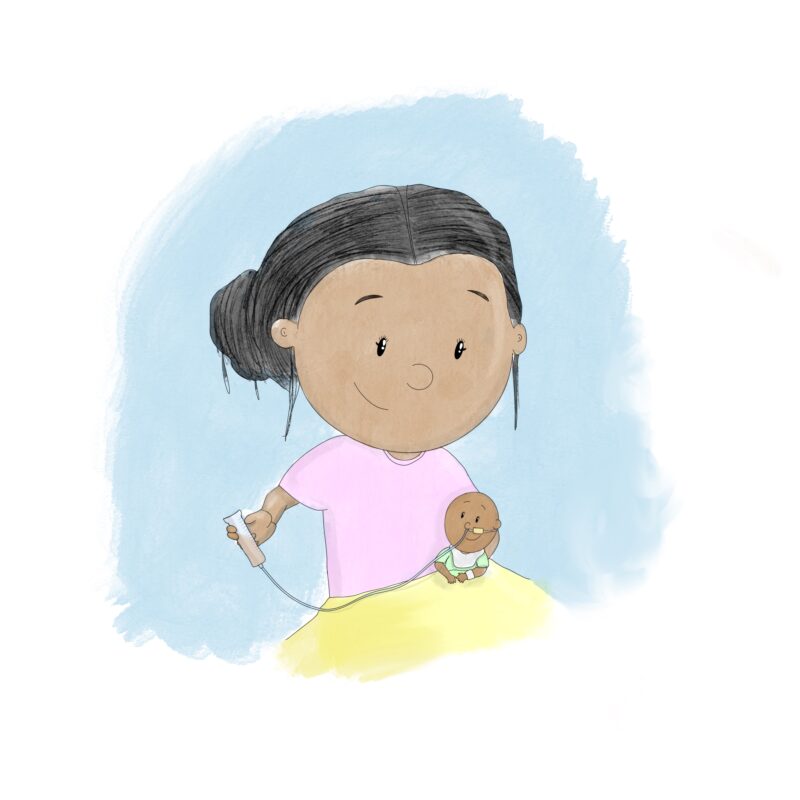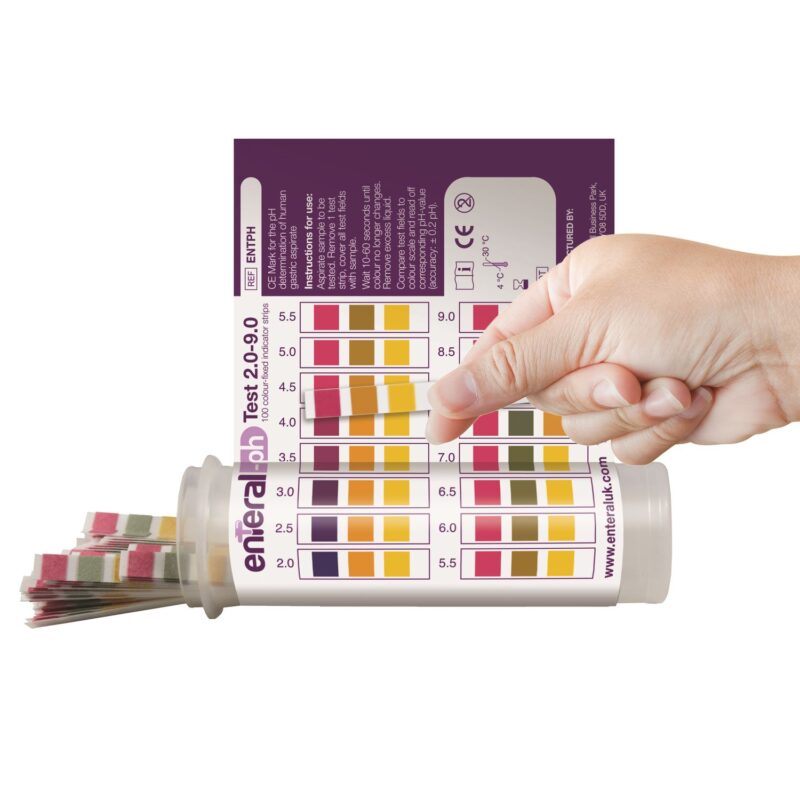It is usual for babies that have been born early or unwell to be unable to take milk feeds from breast or bottle, therefore they require nasogastric feeds (tube feeding). You will be encouraged to participate in tube feeding your baby.
Remember it doesn’t matter how long it takes for you to learn these skills, we are here to help and support you, as we want you to be confident before you tube feed independently.

Hygiene and preparation of equipment
Before starting tube feeding you must wash and gel your hands. You will require a clean, tidy flat surface to place your equipment on. Gather together all the necessary equipment such as baby’s feed, 10ml syringe and ph testing strips.
Check tube for displacement and pH testing

Check that the feeding tube Is still fixed in a secure position and that the feeding tube is not looped out of the nostril. It is very important that the Ph is tested before every feed.
To do this attach the 10ml syringe to the end of the feeding tube, draw back on the syringe to obtain a small amount of liquid, disconnect the syringe and replace cap.
Drop the liquid onto the pH strip covering all three squares, you should see the squares change colour.
Giving tube feeds
You will be shown how to tube feed your baby by nursing staff.
The feed works by gravity so will flow naturally when the syringe is lifted above the baby.
The amount your baby requires will be calculated and adjusted by nursing staff as required. Please ask nursing staff if you need any support of guidance.
Safety issues when tube feeding
If you baby starts to cough, gag, vomit or has any colour changes during tube feeding lower or put a kink in the feeding tube to stop the milk flowing. Ask nursing staff for help and advice.